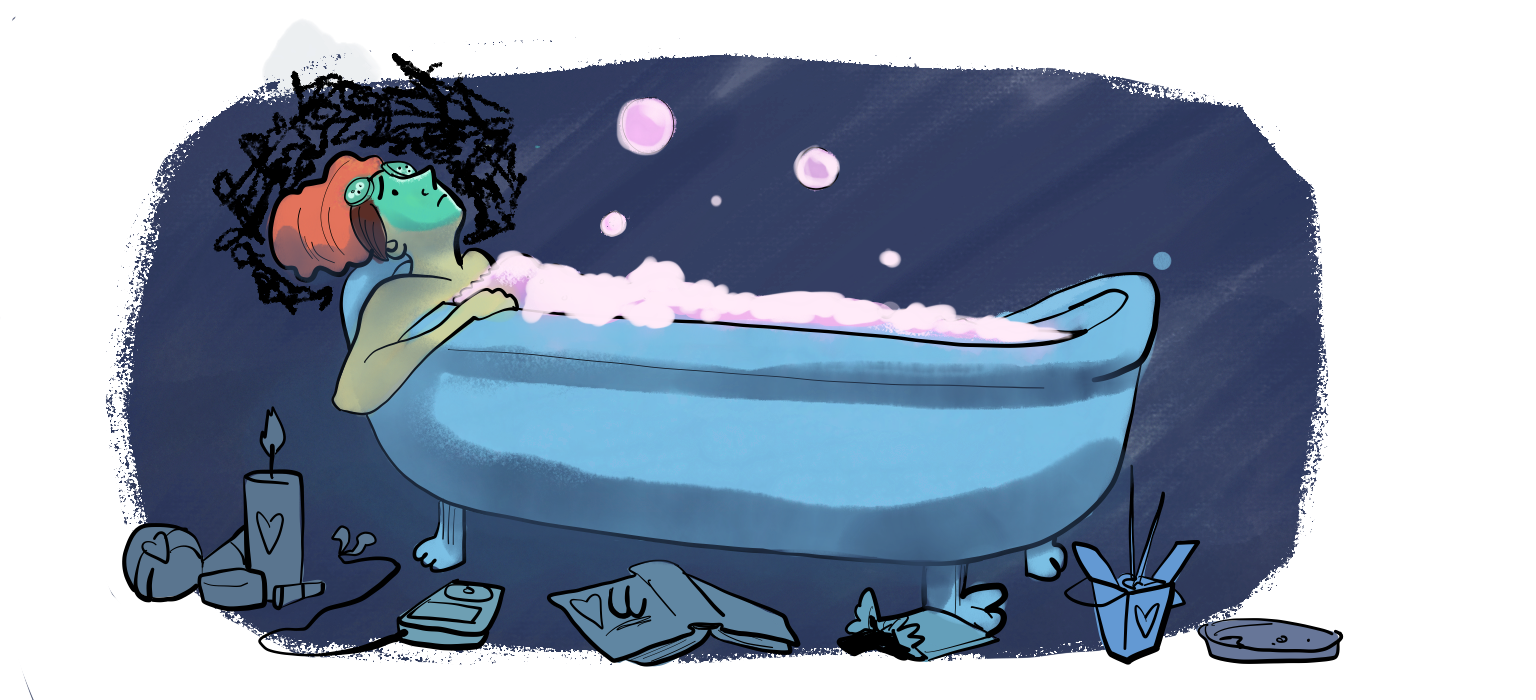Self-care is an essential component of maintaining good mental health and well-being, especially in a world that often demands continuous productivity, leading to stress and burnout. Since the emergence of multi-tasking, computers and smartphones burn-out has been on the rise. This article explores the concept of self-care within a mental health framework, offering insights into recognizing burnout and implementing effective self-care strategies to mitigate its effects. You might see overlap between feelings of burn-out and mental health symptoms related to depression and anxiety.
Understanding Burnout
Burnout is a state of emotional, physical, and mental exhaustion caused by excessive and prolonged stress. It occurs when one feels overwhelmed, emotionally drained, and unable to meet constant demands. As the stress continues, one begins to lose the interest and motivation that led them to take on a certain role in the first place.
Burnout reduces productivity and saps one's energy, leaving individuals feeling increasingly helpless, hopeless, cynical, and resentful. Eventually, the "burnt-out" individual may feel like they have nothing more to give.
The most common signs of burnout include:
- Feeling tired or drained most of the time
- Feeling helpless, trapped, and defeated
- Detachment, feeling alone in the world
- Loss of motivation
- Increasingly cynical and negative outlook
- Decreased satisfaction and sense of accomplishment
The Role of Self-Care in Preventing Burnout
Self-care refers to activities and practices that we engage in on a regular basis to reduce stress and enhance our well-being. The goal of self-care is to take care of our mental, emotional, and physical health. It's a proactive approach to maintaining your health and improving your quality of life.
Self-care is not a one-size-fits-all strategy; it requires tailoring practices to fit individual needs and preferences. However, at its core, self-care is about taking the time to do activities that nurture you, rather than deplete you.
Implementing Self-Care Strategies
1. Physical Self-Care
This includes activities that improve your physical health, such as eating nutritious foods, getting enough sleep, engaging in physical activity, and attending medical appointments. Physical self-care also involves resting when your body needs it and not pushing yourself beyond your limits. Doing too much can lead to burn-out anf fatigue.
2. Emotional Self-Care
Emotional self-care involves activities that help you connect, process, and reflect on a full range of emotions. This can include therapy, journaling, mindfulness practices, and spending time with loved ones who enrich your life.
3. Social Self-Care
This is about maintaining healthy, supportive relationships, and ensuring you have a network of friends and family to turn to for support. Social self-care might involve setting boundaries to protect your energy, saying no when you need to, and engaging in activities that bring you joy with others. Don't overdo it though, we receive so much feedback from people who feel wiped and want to lay in bed all day after a day of socializing. Listen to your body.
4. Mental Self-Care
Mental self-care includes activities that stimulate your mind and contribute to your growth. This could be through learning a new skill, engaging in hobbies, or simply allowing yourself time to read or engage in leisure activities that challenge your brain. Do something fun, exciting- even challenging to regroup.
5. Spiritual Self-Care
For some, spiritual self-care might involve participation in organized religion, but it can also encompass activities that nourish the soul in non-religious ways, such as meditation, yoga, spending time in nature, and practicing gratitude. Brain scans have shown changes in the brain with some of these changes being massive in benefit.
Remember, preventing burnout is not just about avoiding stress but about building and maintaining a lifestyle that supports your mental, physical, and emotional health through self-care. It's about setting boundaries, recognizing when you're stretching yourself too thin, and giving yourself permission to rest and recharge. By incorporating self-care practices into your daily routine, you can protect your health, increase your resilience, and enhance your overall well-being.
Understanding Burnout
Burnout is a state of emotional, physical, and mental exhaustion caused by excessive and prolonged stress. It occurs when one feels overwhelmed, emotionally drained, and unable to meet constant demands. As the stress continues, one begins to lose the interest and motivation that led them to take on a certain role in the first place.
Burnout reduces productivity and saps one's energy, leaving individuals feeling increasingly helpless, hopeless, cynical, and resentful. Eventually, the "burnt-out" individual may feel like they have nothing more to give.
The most common signs of burnout include:
- Feeling tired or drained most of the time
- Feeling helpless, trapped, and defeated
- Detachment, feeling alone in the world
- Loss of motivation
- Increasingly cynical and negative outlook
- Decreased satisfaction and sense of accomplishment
The Role of Self-Care in Preventing Burnout
Self-care refers to activities and practices that we engage in on a regular basis to reduce stress and enhance our well-being. The goal of self-care is to take care of our mental, emotional, and physical health. It's a proactive approach to maintaining your health and improving your quality of life.
Self-care is not a one-size-fits-all strategy; it requires tailoring practices to fit individual needs and preferences. However, at its core, self-care is about taking the time to do activities that nurture you, rather than deplete you.
Implementing Self-Care Strategies
1. Physical Self-Care
This includes activities that improve your physical health, such as eating nutritious foods, getting enough sleep, engaging in physical activity, and attending medical appointments. Physical self-care also involves resting when your body needs it and not pushing yourself beyond your limits. Doing too much can lead to burn-out anf fatigue.
2. Emotional Self-Care
Emotional self-care involves activities that help you connect, process, and reflect on a full range of emotions. This can include therapy, journaling, mindfulness practices, and spending time with loved ones who enrich your life.
3. Social Self-Care
This is about maintaining healthy, supportive relationships, and ensuring you have a network of friends and family to turn to for support. Social self-care might involve setting boundaries to protect your energy, saying no when you need to, and engaging in activities that bring you joy with others. Don't overdo it though, we receive so much feedback from people who feel wiped and want to lay in bed all day after a day of socializing. Listen to your body.
4. Mental Self-Care
Mental self-care includes activities that stimulate your mind and contribute to your growth. This could be through learning a new skill, engaging in hobbies, or simply allowing yourself time to read or engage in leisure activities that challenge your brain. Do something fun, exciting- even challenging to regroup.
5. Spiritual Self-Care
For some, spiritual self-care might involve participation in organized religion, but it can also encompass activities that nourish the soul in non-religious ways, such as meditation, yoga, spending time in nature, and practicing gratitude. Brain scans have shown changes in the brain with some of these changes being massive in benefit.
Remember, preventing burnout is not just about avoiding stress but about building and maintaining a lifestyle that supports your mental, physical, and emotional health through self-care. It's about setting boundaries, recognizing when you're stretching yourself too thin, and giving yourself permission to rest and recharge. By incorporating self-care practices into your daily routine, you can protect your health, increase your resilience, and enhance your overall well-being.






 RSS Feed
RSS Feed
